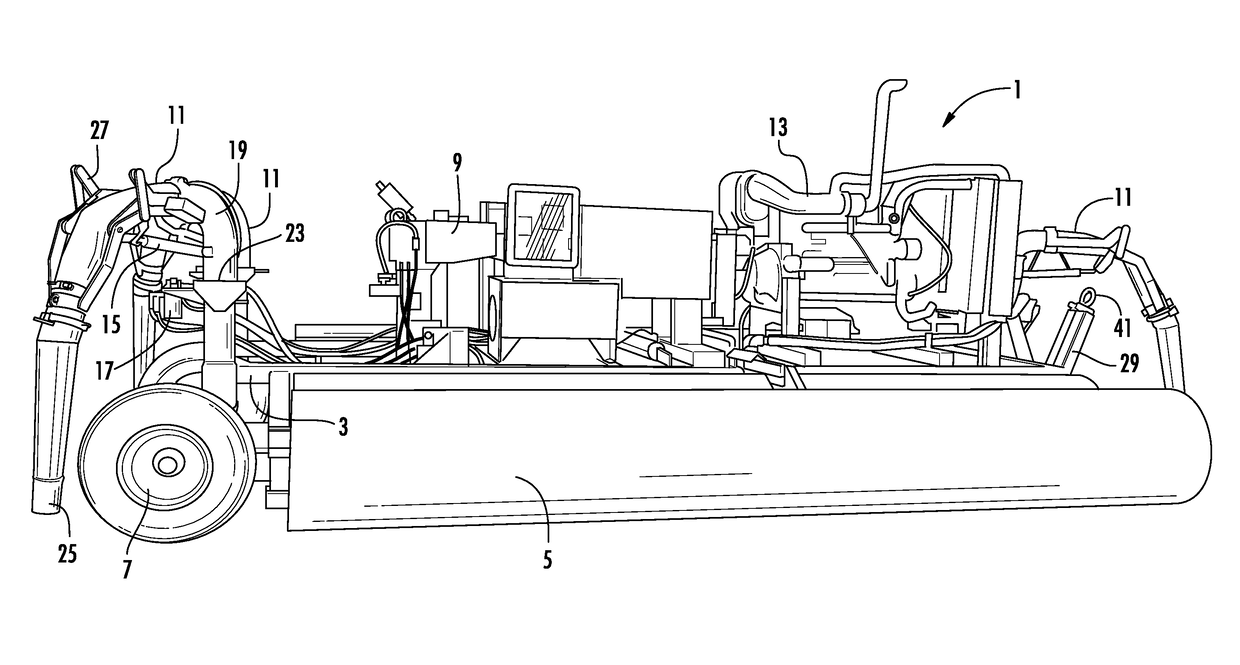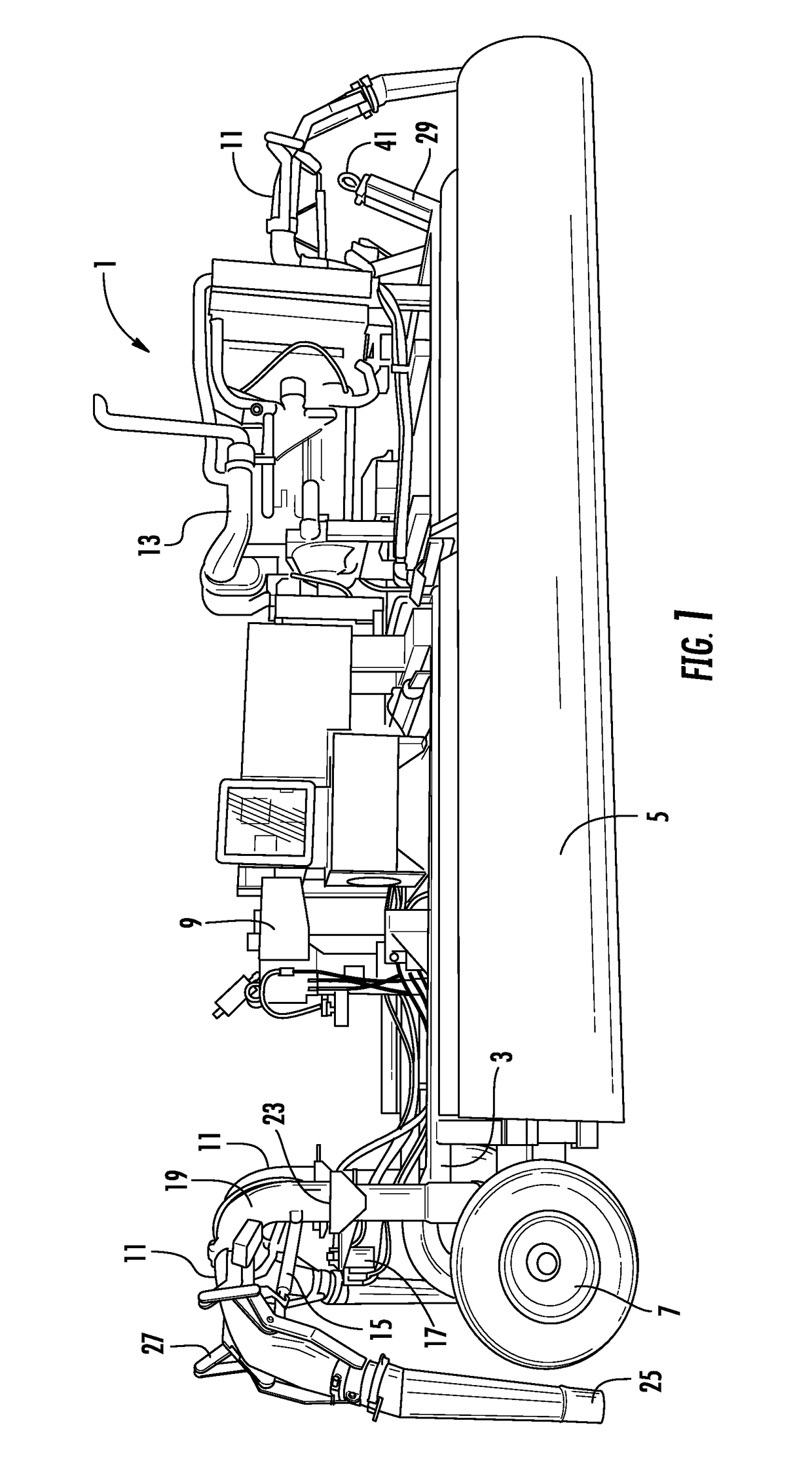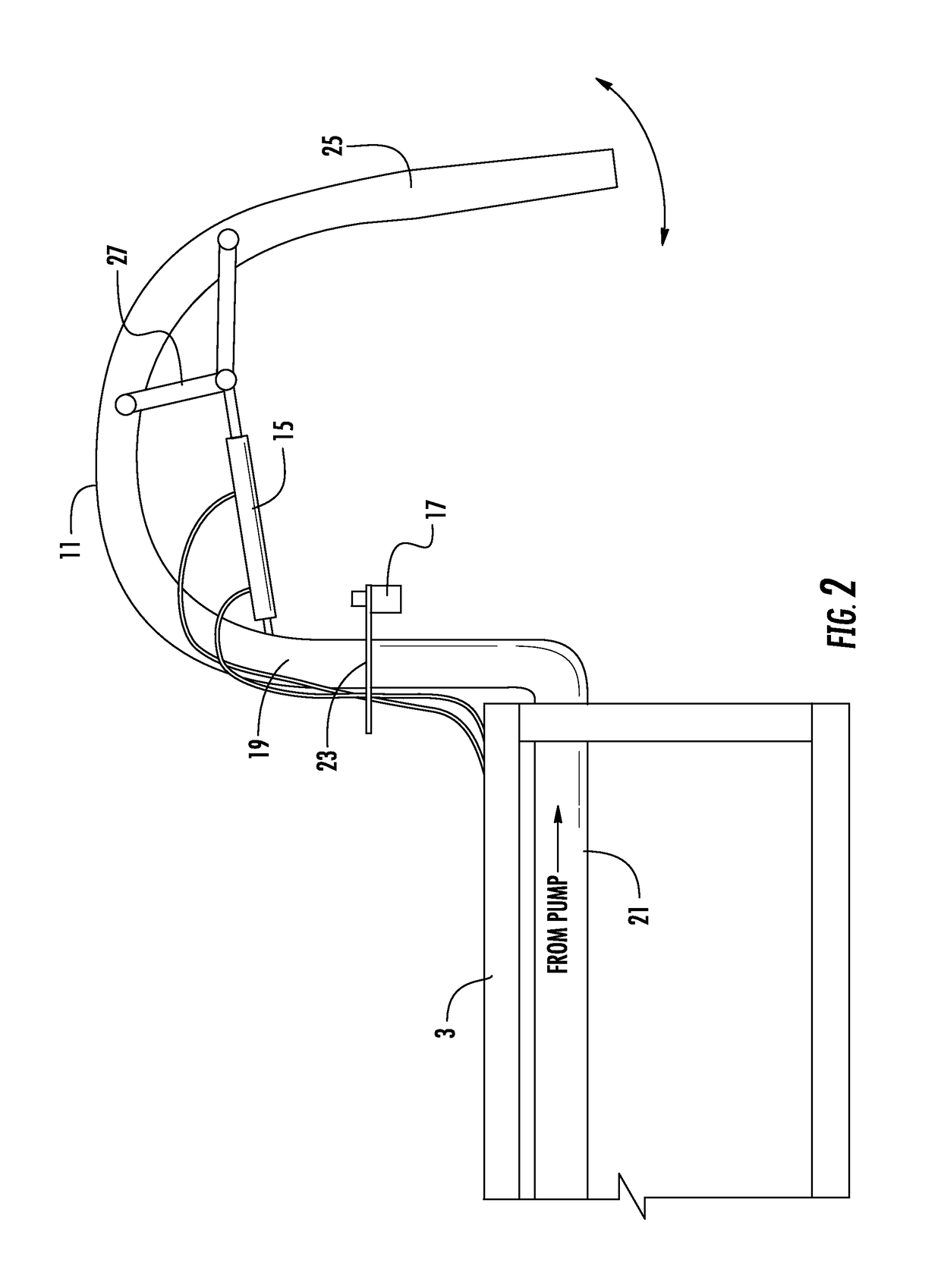Floating manure agitator with multidirectional agitator nozzles
a nozzle and agitator technology, applied in the field of floating vessels, can solve the problems of reducing the available volume of the storage installation area, increasing the risk of overflow, and limiting the movement of the nozzle in the vertical direction, so as to prevent damage to the pump, facilitate the effect of maneuvering, and effectively raise the floating vessel off the ground
- Summary
- Abstract
- Description
- Claims
- Application Information
AI Technical Summary
Benefits of technology
Problems solved by technology
Method used
Image
Examples
Embodiment Construction
[0026]With reference to FIG. 1, a floating aquatic manure agitator vessel 1 is shown constructed in accordance with the present invention. As shown, the main body or deck 3 of the vessel is flanked on each side by a large wing 5 which functions to maintain the vessel 1 afloat in the manure pond upon launching same. Each wing 5 of the vessel extends substantially the entire length of the vessel 1 and is preferably comprised of a pair of integrally connected laterally juxtaposed pontoons. As will be described in more detail hereafter, each wing 5 is pivotally adjustable upwardly and downwardly to facilitate ease of transporting the manure agitator vessel 1. The deck 3 further includes an undercarriage system 7 with wheels to facilitate launching and removal of the vessel from the manure pond, as well as transportability and storage of the vessel.
[0027]Mounted atop of the deck 3 of the vessel 1 is a low pressure, high-volume PTO pressure pump 9 which draws effluent from the pond to fee...
PUM
 Login to View More
Login to View More Abstract
Description
Claims
Application Information
 Login to View More
Login to View More - R&D
- Intellectual Property
- Life Sciences
- Materials
- Tech Scout
- Unparalleled Data Quality
- Higher Quality Content
- 60% Fewer Hallucinations
Browse by: Latest US Patents, China's latest patents, Technical Efficacy Thesaurus, Application Domain, Technology Topic, Popular Technical Reports.
© 2025 PatSnap. All rights reserved.Legal|Privacy policy|Modern Slavery Act Transparency Statement|Sitemap|About US| Contact US: help@patsnap.com



